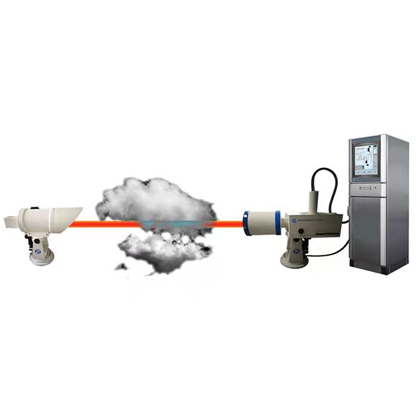
Category:Air Monitoring
Model:USW-opFTIR
Overview:The USW-opFTIR Gaseous Pollutant Continuous Monitoring system can monitor more than 400 gas components including VOCs, SO2, NO(NOx), CO, CO2, HCL, HF, CH4, N2O, SF602, etc., suitable for unorganized industrial production processes emission monitoring and environmental pollution sensitivity monitoring of the park/enterprise boundary.
The USW-opFTIR system is mainly composed of 4 subsystems: gaseous pollutant spectrum analyzer, infrared light source emitting telescope, automatic refrigeration system, and data acquisition and processing system.
The gaseous pollutant spectrum analyzer is based on the principle of optical coherence, performs interference modulation and Fourier transform to obtain the spectrum, and then calculates the concentration of gaseous pollutants through a unique algorithm (least squares method).
The infrared light source transmitting telescope is to provide infrared radiation signal for the system, and after passing through the polluted gas in the open environment outside, it is received by the receiving telescope.
The automatic refrigeration system transmits the signal to the control system through the liquid level sensor, and the control system sends a command to push the liquid nitrogen out of the container, and finally enters the system container through the transfer pipeline to ensure that the system maintains the highest signal-to-noise ratio during operation, thereby ensuring The system works normally, stably and accurately.
The data acquisition and processing system has the functions of on-site data real-time transmission, remote fault diagnosis, report statistics and graphic data analysis, which realizes the unattended work site.
The whole system has a simple structure, wide dynamic range, strong real-time performance, flexible networking, and low operating cost. At the same time, the system adopts a modular structure, which is easy to combine, and can fully meet the requirements of DCS signal and data system communication of the environmental protection department.
Measurement items:
Greenhouse gases: CO2, CH4, N2O, SF6, etc.;
Environmental pollution gases: SO2, CO, NO, O3, NH3, CS2, etc.;
Corrosive gases: HCL, HF, BHR, etc.;
Volatile organic compounds (VOCs): ethylene, ethane, propane, propylene, acetone, ethyl acetate, etc.;
Others: The database covers infrared spectroscopy quantitative data of more than 400 gas components and VOC components.
Measurement methods:
Sampling method: open optical path
Analysis method: Fourier transform infrared
System Features:
Non-contact, real-time, automatic and continuous measurement of a variety of polluting gas emissions, and quickly respond to local pollution sources and high-density polluted air masses
Monitor multi-components in real time, effectively monitoring the concentration status of pollution factors
Fast measurement, no front-end pretreatment facilities, no loss in the measurement process
No damage to the sample, ensuring the authenticity of the sample gas
Able to achieve full coverage monitoring of the industrial park/plant boundary
Good monitoring accuracy and high reliability
Convenient maintenance and low operating cost
Easy to operate software, and automatically save data
No frequent calibration
Built-in flow calibration cell
Measuring range ppb~percentage level
Measurement accuracy ≤±5.0%F.S
Measurement lower limit ppb level
Measuring optical path 50~1000m
Measurement mode Continuous automatic operation, automatic display and storage of measurement results
Time resolution 1~10min selectable
Wave band range 700~5000 cm-1
Infrared light source 24w carbon silicon rod
Telescope Cassegrain
Detector refrigeration method Liquid nitrogen refrigeration
Installation method Two-station on-fire type